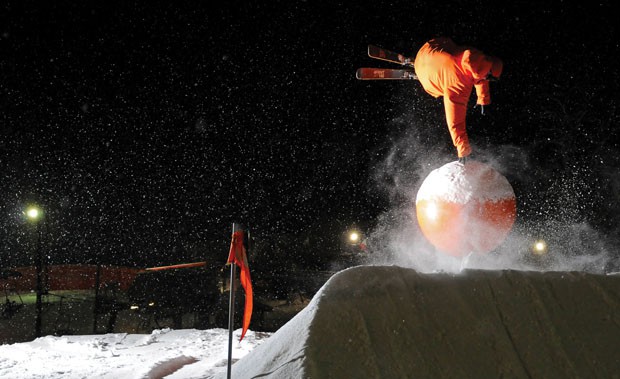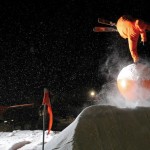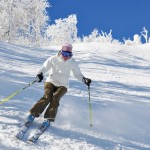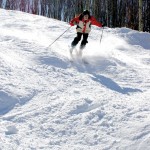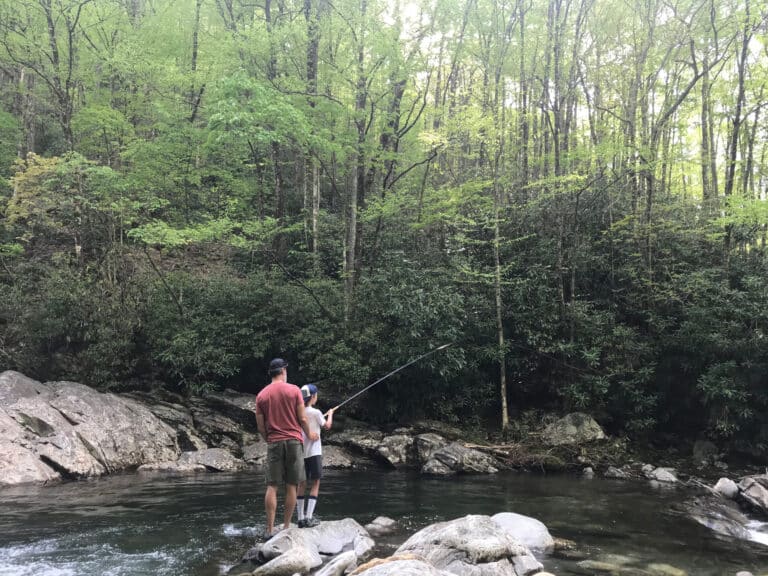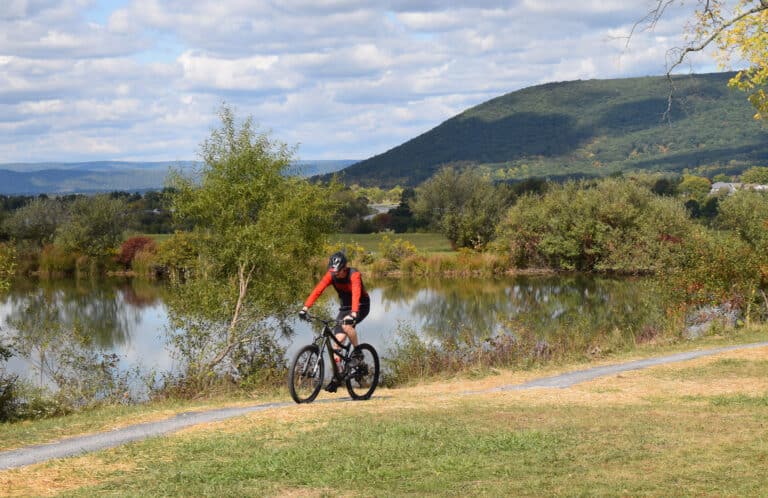Which Southern resort has the most gladed tree skiing? Or the steepest black diamond? Contrary to popular belief, Southern Appalachia actually does have high quality ski terrain. Bumps, trees, jaw-dropping steeps, sick man-made features…all the expert terrain people feel compelled to head West for can be found right here at home. You just have to know where to look. So, where are the moguls? The happening apres-ski scene? The tree runs? Here’s a short quiz to see if you know where the toughest terrain in the South resides.
1. True or False: There are no lift-served tree runs in the southeast.
False.
You can find tree skiing in abundance at West Virginia’s Timberline Resort. The family-run mountain has always had legitimate fall line tree skiing, with a couple of designated gladed runs labeled on the map and plenty of locals-only stashes with tight, steep lines. But last summer, a dozen local patrollers and skiers took Timberline’s “sticks” to the next level by spending several weekends cleaning tree islands between popular blue runs, tripling Timberline’s gladed portfolio.
“We had several chainsaws working at once, putting in 120 volunteer hours this summer,” says J.R. Nolan, an expert tree skier who runs Timberline’s mountain bike program during the summer.
The result is a portfolio of professionally designed gladed runs, easily the most extensive tree skiing at any resort in the Mid-Atlantic and Southeast. And these aren’t spruce-choked tree runs with super tight lines; these are wide-open glades with multiple options, most of which are sandwiched between intermediate runs, so the pitches aren’t too steep.
“I spent 15 years at Breckenridge and have skied all over, and these trees are as good as anything else I’ve found,” Nolan says.
While most resorts in our region do their best to minimize access to trees due to liability fears, Timberline has embraced its natural terrain.
“The difference is we’re privately owned, so we don’t have bean counters and lawyers to answer to,” Nolan says. “The resort is run by skiers, not a corporation.”
For a long, consistent run in the trees, check out the newly gladed tree island between Almost Heaven and Thunder. For the steepest woods at the resort, go to Cherry Glades, one of the resort’s original glades that’s been reworked into 800 vertical feet of expert terrain.
Local’s Tip: It’s going to sound obvious, but you have to ski the whites between the trees. So often, people obsess about the trees in their way. It’s called target fixation, and it typically ends badly. Try to ignore the trees and visualize the white line down the mountain. There’s more open space than you realize.
For more information about Timberline Resort, check out http://basecamp.blueridgeoutdoors.com/?p=2555
2. Fill in the Blank: The steepest terrain in the southeast is found at _________ and _________.
A: Sugar Mountain Resort and Snowshoe Mountain Resort
North Carolina’s Sugar Mountain tops out at 5,300 feet and has a total vertical drop of 1,200 vertical feet, one of the longest cumulative drops of any resort in the Southeast. But vertical drop alone doesn’t belie a slope’s steepness. For that, you have to look at the slope’s actual grade or pitch. That’s where Sugar shines, with three black diamond runs beginning a mile high in elevation with pitches greater than 40 percent. Both Boulderdash and Whoopdedoo have the steepest stretches of skiable terrain on the mountain with pitches that max out at 48 percent, and Tom Terrific comes in a close second with a 45 percent stretch.
To put this in perspective, at most Western resorts, slopes are given black diamond status when they begin to tip 40 percent in grade, which puts all three of Sugar’s expert-only slopes squarely in legitimate black diamond territory. The slopes are so steep, Sugar has to hook their snow cats up to winches in order to groom the most vertical pitches.
“Boulderdash and Whoopdedoo are both straight fall line slopes,” says Kim Jochl, a former member of the U.S. Alpine Ski Team who now runs the marketing program at Sugar. “They don’t curve around the mountain, they go straight down it.”
Snowshoe Mountain, in West Virginia, has a few different slopes that measure in the low 40s, but their toughest run, Lower Shay’s Revenge, has been measured at a 53 percent pitch, making it the single steepest run in our region. For a bit of comparison, consider Tuckerman Ravine, a ski mecca in the White Mountains of New Hampshire that’s famous for its sustained steep pitches of 55 degrees.
3. True or False: Southern ski resorts groom their slopes so often, moguls are never allowed to form.
False.
At least, that’s false for Winterplace Resort in West Virginia. Winterplace doesn’t get the attention of some of the bigger resorts in the Mountain State, but one thing the smaller resort can hold over its contemporaries is Turkey Chute, perhaps the sweetest mogul run below the Mason Dixon. While most Southern ski slopes pride themselves on consistently grooming all their runs, creating a more family friendly environment, Winterplace prefers not to touch the expert-only Turkey Chute with a groomer unless absolutely necessary.
“We let it bump up early in the season and we won’t groom it unless it’s really nasty,” says Tom Peterson, director of Winterplace’s ski school. Not only does Winterplace let Turkey Chute evolve into a mogul run every winter, the resort purposely crafts the moguls, one line at a time.
“We get the best guys from ski school and ski patrol out there early to set a pattern of good bumps,” Peterson says. “Moguls can be fun, or they can suck. It all depends on who sets them. If you get a bunch of people in there just hitting the breaks, there won’t be any rhythm to the run.”
But if the bumps are set with purpose, a pattern emerges and a good skier or boarder can tap into the flow that only bumps can offer. The result of all that hard work on the part of the patrollers is 400 vertical feet of bumpy goodness with killer flow, dropping off the north face of Winterplace between two islands of trees. Even with the tree cover, you’re still within sight line of the lift, so your skills are on display for all the gapers on high.
Local’s Tip: Understanding how to pick a line and stick with it is key, but it takes lots of mileage to ski bumps well. Maintaining contact with the snow is paramount. Once you start to get air between your skis and the snow, you’ve lost control and it won’t end well. Winterplace offers bump lessons on request if you want to learn how to style Turkey Chute.
For more information about Winterplace Ski Resort, check out http://basecamp.blueridgeoutdoors.com/?p=2559
4. Essay: Seven Springs Resort has the most progressive terrain park in the region. Explain why.
A: Because Seven Springs has not one park, not two parks, but six distinct terrain parks with more than 50 different freestyle features. The parks include kid-friendly fun hits to The Spot, a full-featured expert-only park famous for its triple-line jump, urban rail, and super pipe. Quantity aside, what sets Seven Springs’ freestyle terrain apart from the competition is the level of professionalism involved in creating and maintaining the features.
“Seven Springs is willing to devote a lot of resources to their park,” says Bruce Persinger, a videographer who films at Seven Springs often. “They’ve got guys on staff building in the off season, and half a dozen groomers working full time during the winter to keep every single feature in top notch shape. The management team wants every feature, even the ride-on rail in the kiddie park, to look like it’s straight out of a magazine photo shoot.”
The attention to detail has paid off. For two years in a row, they’ve been voted by national snowboard magazines as the best terrain park on the East Coast, besting bigger name resorts in the Northeast. The park crew is so talented and highly regarded, they were invited to build a unique feature at Snowboard Magazine’s Superpark at Oregon’s Mount Bachelor Resort, an honor bestowed on only a handful of park builders.
Seven Springs’ signature feature would have to be their Super Pipe, a 550-foot-long half pipe with 18-foot walls, similar to the dimensions found at the half-pipes at the center of X Games competitions.
5. Where’s the most promising apres-ski scene in the South?
A: Devils Backbone Brewery, Wintergreen Resort, Va.
Legitimate ski bars in the South can be tough to find. There are plenty of bars near our slopes, but none of them make you feel like you’re in an ‘80s ski movie. Enter the Devils Backbone Brewpub, which sits at the base of Wintergreen Resort, not 20 minutes from your last run, and was built to feel like a ski chalet stuck in the Rocky Mountains with big timbers and beams, three grand fireplaces, and animal mounts on the walls.
“I got into brewing because of skiing,” says owner Steve Crandall, going on to detail a European ski trip during the ‘80s that changed his life. “I’m in the Italian Alps, skiing these beautiful mountains, and what makes the biggest impression? The beer. I took my first sip of the crisp hefeweizen they serve over there, and I had an epiphany. For the next 20 years, when my family and I skied out West, I hunted for the best breweries.”
Crandall’s Colorado-inspired brewpub has become the go-to destination for post-Wintergreen ski days, serving upscale pub grub and clean, Germanic style beers to a standing room only crowd sporting ski jackets and windburn. The location and style of the brewpub help attract a crowd, but the award-winning brew is the real draw here. Devils Backbone won the World Beer Cup in 2010, besting 1,000 international breweries in the brewpub category. They’ve won more medals in their two years than any other Mid-Atlantic brewery. Devils Backbone beer is so well respected, they’re expanding with a production brewery that will enable them to produce 10,000 barrels and distribute throughout Virginia next year.
But don’t show up after a ski session looking for any trendy seasonal brews. “That flavored stuff is really popular, but that’s not what we do,” Crandall says. “We’re a traditional brewery. None of that pumpkin stuff.”
Extra Credit: Where is the best post-work shred-fest to be found?
A: Appalachian Ski Mountain.
This small, local-heavy resort in North Carolina’s High Country runs their lifts from 5pm until midnight every Friday and Saturday in January and February. Appalachian has one of the most progressive terrain park scenes in the South, and draws a strong university crowd from nearby Appalachian State.
